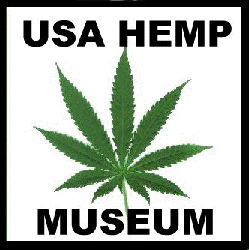
HEMP HISTORY ROOM
USA Hemp Museum Store - Bookmark This Site - Museum Link - Email The Museum
 |
HEMP HISTORY ROOM USA Hemp Museum Store - Bookmark This Site - Museum Link - Email The Museum |
|
HEMP HISTORY IN EARLY AMERICA. Hemp was second to tobacco as the crop to
grow in early America. The demand for tobacco in England, kept
the farmers busy with this cash crop. Most of the hemp crop in
America was used at home in local commerce, much to the dismay of King George
and the English navy. |
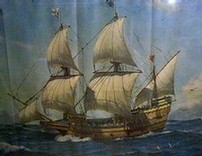 |
This 1957 replica of the Mayflower, outfitted with hemp, shows how hemp sails and ropes carried the European settlers to America for hundreds of years - 1492 to the advent of steamships in the early 1800's. |
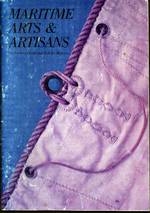 |
Seamen were masters of knot-tying and sewing of hemp rope and canvas. The book is MARITIME ARTS & ARTISANS. The Collection of the San Francisco Maritime National Historical Park. San Francisco Craft and Folk Art Museum Exhibit, 1989. |
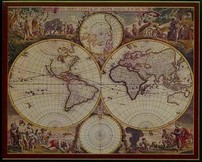 |
Maps, log books, Bibles, books were all made of rag bond paper that had a high hemp content from recycled clothes of homespun hemp, sails, ropes, tents made of hemp. The collection and recycling of rags for paper was an industry for hundreds of years in Europe, and a lesson to us on the importance of paying attention to recycling in general, we have got to stop burying what was once our wealth. |
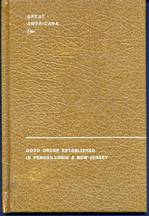 |
Reproduction of a 1630 book called: GOOD ORDER ESTABLISHED IN PENNSYLVANIA AND NEW JERSEY. By Thomas Budd. Budd wanted to base the economy on production of linen from hemp and flax. Storehouses of hemp and flax would act like banks. Public schools were proposed in which children would spin yarn for an hour each day. |
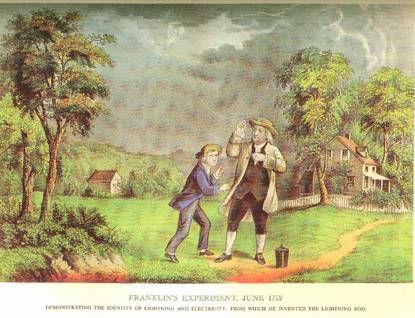 |
FRANKLIN'S EXPERIMENT, JUNE 1752. "Demonstrating the Identity of Lightning and Electricity, From Which He Invented the Lightning Rod. From "Currier & Ives," Ed. by John L. Pratt, 1968. |
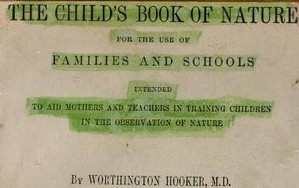 |
THE CHILD'S BOOK OF NATURE for the use of FAMILIES AND SCHOOLS intended to aid MOTHERS AND TEACHERS IN TRAINING CHILDREN IN THE OBSERVATION OF NATURE. By Worthington Hooker, M.D. 1888. |
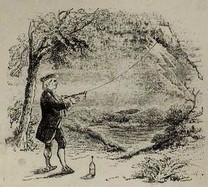 |
It was not just any string that connected Ben Franklin to the clouds above for his famous experiment, it was hemp string. |
 |
Hemp string, hemp string, hemp string. "Dr. Franklin now fastened a key to the end of the hemp string." |
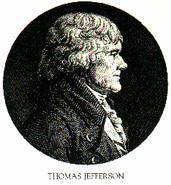 |
Fourth U.S.A. President and hemp farmer Thomas Jefferson. |
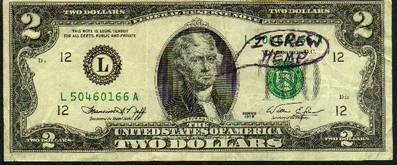 |
The writer of the Declaration of Independence grew hemp. |
| THE STORY OF HEMP IN COLONIAL
VIRGINIA, By Herndon. A Dissertation which includes references
to George Washington as a hemp farmer. Excellent history.
Ask yourself this question: How does George Washington get to grow hemp and not the Curator? It gets to the core of the question, what happened in the last 200 years that we lost such an important right, namely the control of agricultural production. This prohibition must come to an end. What an incredible embarrassment it would be to have to explain to George Washington and Thomas Jefferson that they would have to pull up their hemp crops, that would have been the Second American Revolution! Both men were high on hemp as an important crop to replace and rotate with tobacco. It still is. |
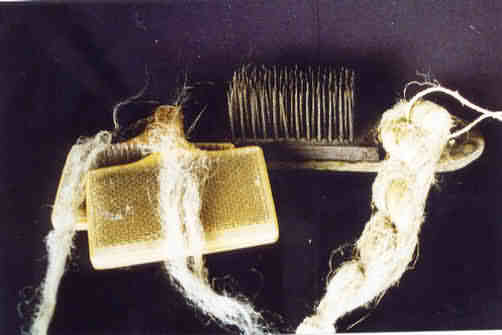 |
Hemp Museum cleaning and carding tools. Left, wool cards; center, long toothed hetchel; right, braid of cleaned hemp. |
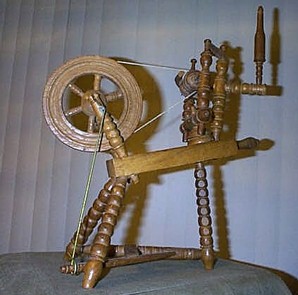 |
Model of a spinning wheel. |
Richard M. Davis on The History
Channel [3:00] into the video below
speaking on American Presidents & Marijuana
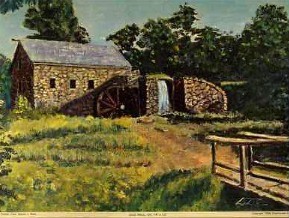 |
Museum print: THE OLD MILL. Many of these water powered mills were used to pulp rags into paper. |
GEORGE WASHINGTON, OUR MOST FAMOUS HEMP FARMER .
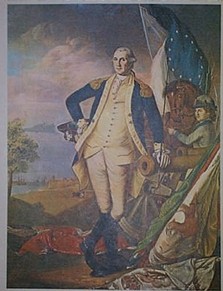 |
General George Washington at
Yorktown. By James Peale (1749 - 1831). The surrender of
General Cornwallis announced the collapse of the British and a
complete victory of American forces on October 17, 1781.
Hemp was there.
Hemp Museum print - 14 X 17 inches. |
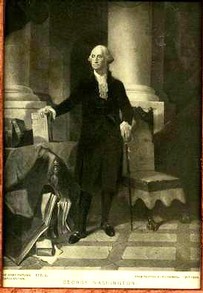 |
George Washington the
statesman. From painting by Rothermel (1817 - 1895).
Framed Hemp Museum print - 5 X 7 inches. |
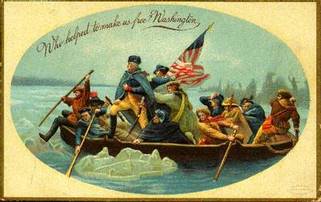 |
"Who helped to make us
free? Washington." Washington crossing the Delaware River in winter.
Hemp Museum postcard. |
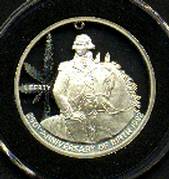 |
This carved coin showing a mounted
General Washington with a hemp leaf is a recognition that George
Washington is also the most famous hemp farmer the U.S. has
produced. Washington said, "Make the most of the hemp
seed and sow it everywhere."
Hemp Museum carved coin, donated by sculptor. |
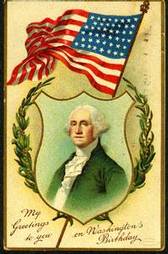 |
"My Greetings to you on Washington's
Birthday."
Hemp Museum postcard. |
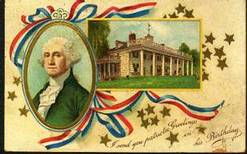 |
"I send you patriotic
greetings on his Birthday."
Hemp Museum postcard. |
| In 1776, Thomas Paine wrote "Common Sense," The document that led to the Declaration of Independence. From Section IV: "Of the present ability of America, with some miscellaneous reflexions," comes the quote, "In almost every article of defense we abound. Hemp flourishes even to rankness, so that we need not want cordage." |
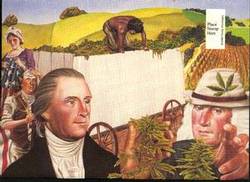 |
Modern envelope showing the happy hempsters doing buds. |
 |
War of 1812 service medal, has the same form as the grave marker below, in recognition of the naval nature of the war fought over hemp trade routes. |
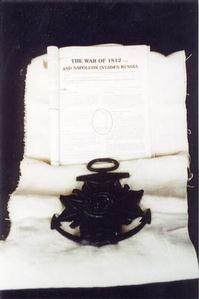 |
This Hemp Museum replica of a War of
1812 grave marker shows the Navy anchor. Most of the war
was fought on the seas.
Hemp Museum replica of a War of 1812 grave marker. |
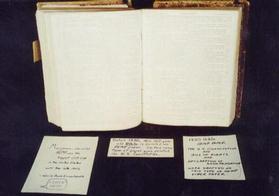 |
This Hemp Museum 1830 English Bible
has excellent strong rag paper from England.
Hemp Museum Bible. |
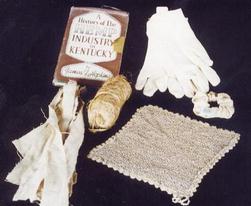 |
Book: A History of the Hemp Industry in Kentucky, by James Hopkins. Clockwise: Book, hemp gloves, hemp hair tie, hemp washcloth, hemp fabric strips, and center a hemp scrubby. |
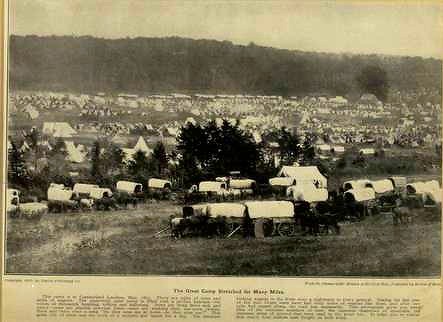 |
"The great Camp Stretched for
Many Miles." This camp is at Cumberland Landing, May,
1862. The sea of sun-bleached white canvas (hemp) are
tents and wagon covers.
Framed Hemp Museum print - 13 X 16 inches. |
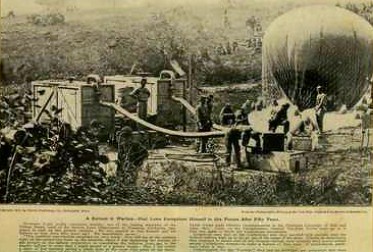 |
"A Balloon in Warfare - Prof.
Lowe recognizes Himself in this Picture After Fifty Years. Few
realize that as far back as the Civil War balloons were used to
observe the enemy's position." - June, 1862. Hemp
ropes are draped over the silk gas bag.
Framed Hemp Museum print -13 X 16. |
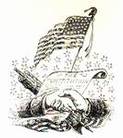 |
The U.S. Constitution and Flag, two of our most cherished symbols were made of hemp before it was prohibited. |
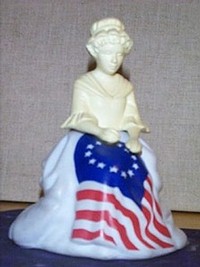 |
Betsy Ross made the first flag of the United States of America out of the finest, strongest fiber available, hemp fabric. "It is also said that the finest laces of the olden days were always made of hemp in preference to any other fiber." -Herndon, p.154. U.S.A. Hemp Museum perfume bottle showing Betsy Ross sewing the first United States flag out of hemp sailcloth.
|
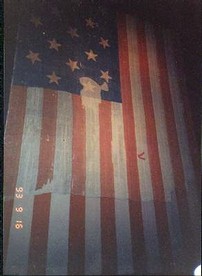 |
The real Star Spangled Banner at
the Smithsonian Museum in Washington, D.C.
Made of linen?
Hemp Museum photo. |
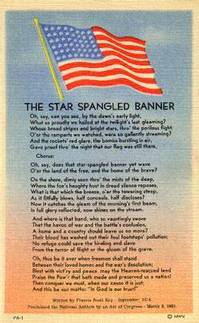 |
Our National Anthem, The Star
Spangled Banner, was written by Francis Scott Key, September
1814, during the War of 1812 with England. Proclaimed the
National Anthem by an Act of Congress - March 3, 1931.
Hemp Museum postcard. |
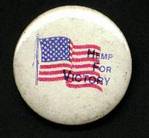 |
The 50 star flag of the new Hemp for Victory movement in the U.S. |
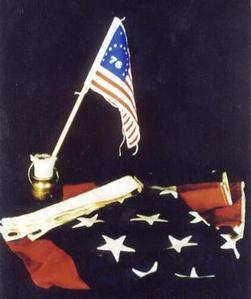 |
The lower flag of the Hemp Museum collection is a 46 star flag presented to the widow of a Spanish - American War veteran on his death. The flag was presented before Arizona and New Mexico became states in 1912. Probably of hemp fabric. The upper flag is a hemp reproduction of a bicentennial flag. The Hemp Museum collection also includes a 45 star U.S.A. Flag. |
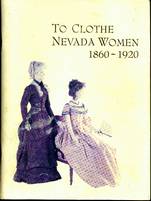 |
Nevada State Museum Popular Series
No. 10: TO CLOTHE NEVADA WOMEN, 1860 - 1920.
1990. This 48 page book shows wagon covers, tents, ropes,
and the story of J. W. Davis, who invented riveted pants and
patented them with Levi Strauss in 1872. Davis moved to
San Francisco from Reno and supervised the manufacturing of
Levis.
Hemp Museum book from a visit to the Nevada State Museum. |
USA Hemp Museum Store - Bookmark This Site - Museum Link - Email The Museum